
to discover
art and crafts
in Venezia

CAMPO SAN TROVASO
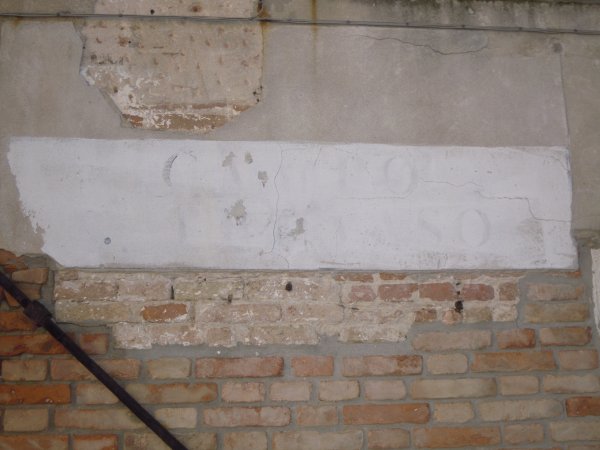
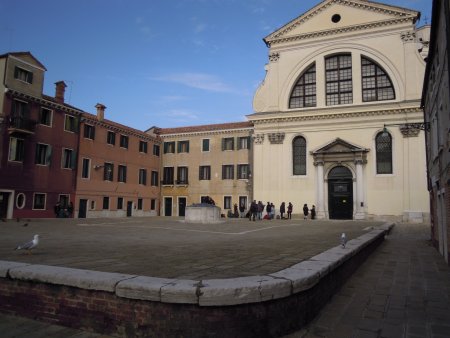
The area takes its name from the church of Saints Gervasio and Protasio folk called "San Trovaso", which overlooks the field and the channel of the same name.
The church, which is believed to have been built in the early days of the city, has been restored or rebuilt several times over the centuries, being damaged by fires or sudden collapses. The latest version, dating from the years between 1500 and 1600, according to many is the work of Palladio, although there is no concrete evidence.
The double entry, from the two sides, is thought to be due to the period of the rivalry between the two factions in which Venice was divided, the Castellani and the Nicolotti, so each had its own entrance door, avoiding the risk of meeting on entering the church.
In the square there is a raised part, used in the past to hold the boxes of clay used to store and filter rainwater. The water was then recovered from the well-head which is located at the center of the square. This was the only Venetians had to obtain fresh water, being surrounded by the see.
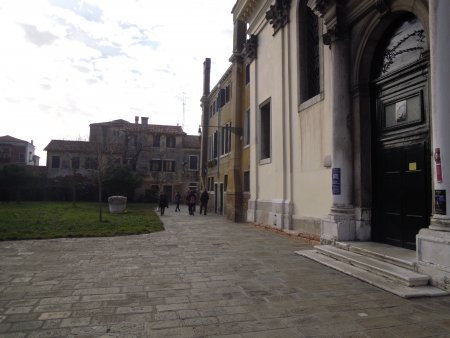
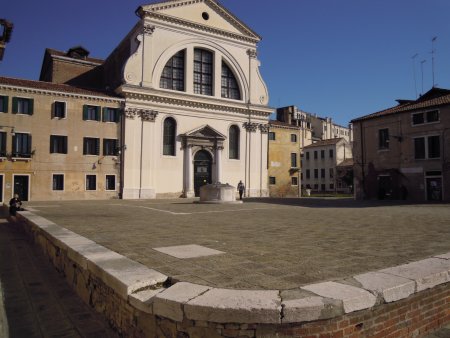
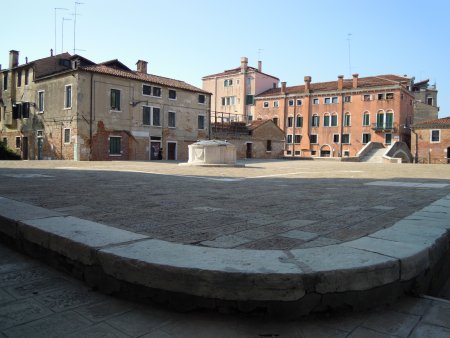
Among the people who lived here we remember Bertuccio Israelo, Paron de nave (ship owner), stepfather of the architect Calendario who was an accomplice of the conspiracy by Marin Faliero, and the famous poetess Gaspara Stampa, lived in 1500. Apparently she established in this area for love of Collaltino dei conti di Collalto , to whom she dedicated many poems and rhymes. Their love, however was painful since Gaspara's passion was only partially repaid by the Count, who eventually broke off the relationship leading poetess in a state of depression and physical exhaustion that led her to commit suicide a few years later.
Among the things to observe, besides the church, the three wellheads, at the two sides of the church
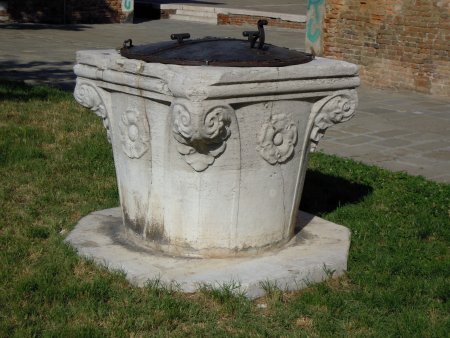
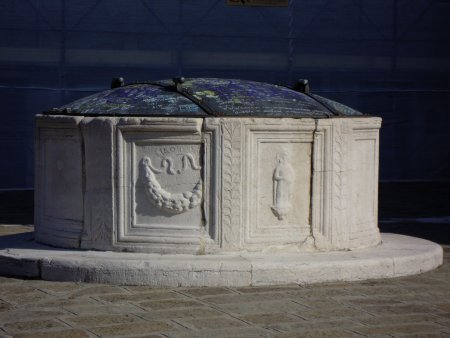
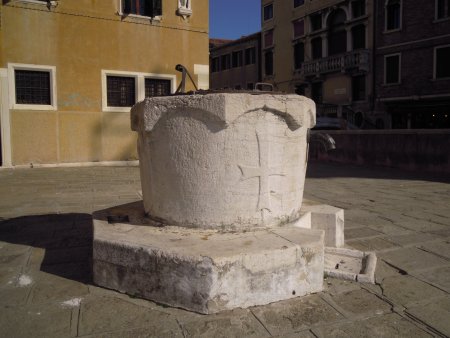
and the Mascaron, the head located above the door leading to the bell tower which does not have much reassuring features
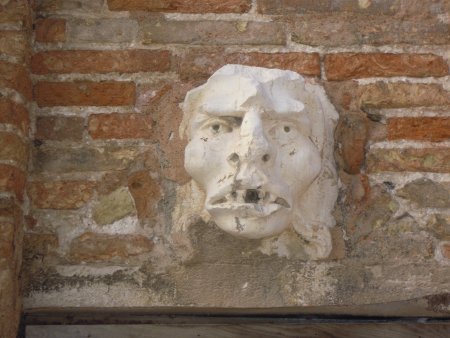
the Brass house, at the foot of the bridge of San Trovaso, built by the painter Italico Brass, in early 1900. The house has two facades enriched by an endless series of paterae (inlaid marble panels on the wall) representing various animals, several coats of arms and bas-reliefs.
Note that here are two Mascaroni too, one per side, to recall the one on the door of the church tower. The a bas-relief depicting a blacksmith, probably the god Vulcan, working with rock and hammer and next to him a child, probably Cupid with an arrow in his hand.
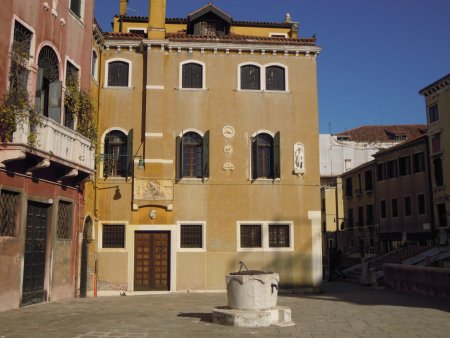
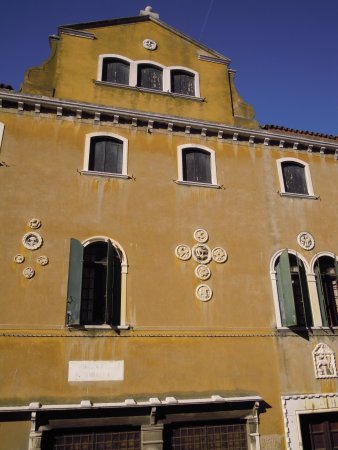
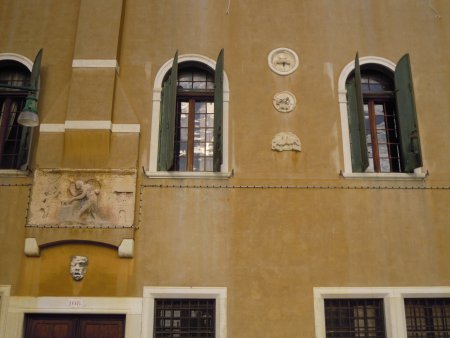
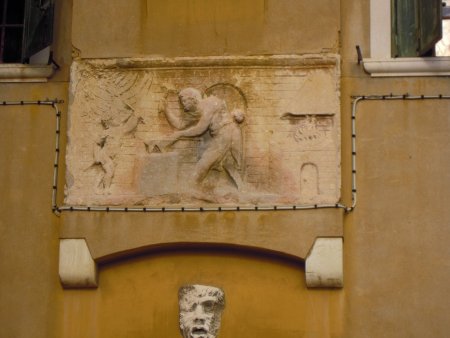
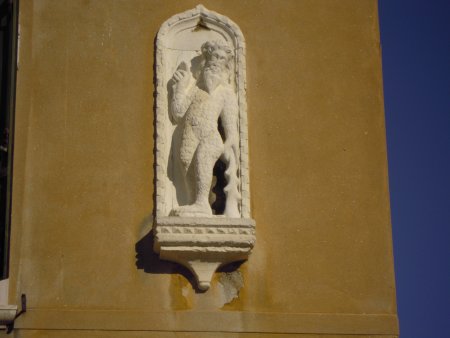
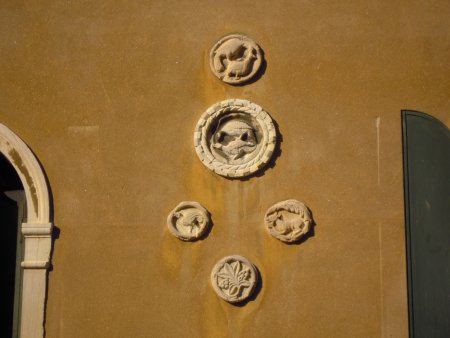
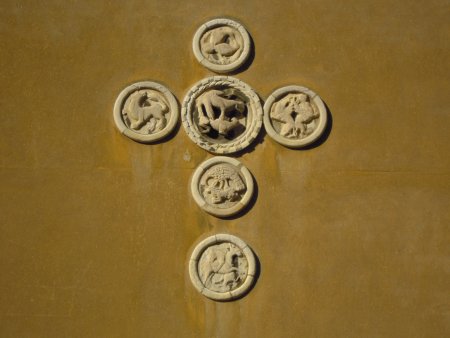
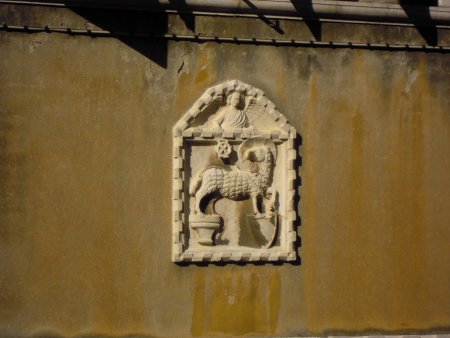
Places
























